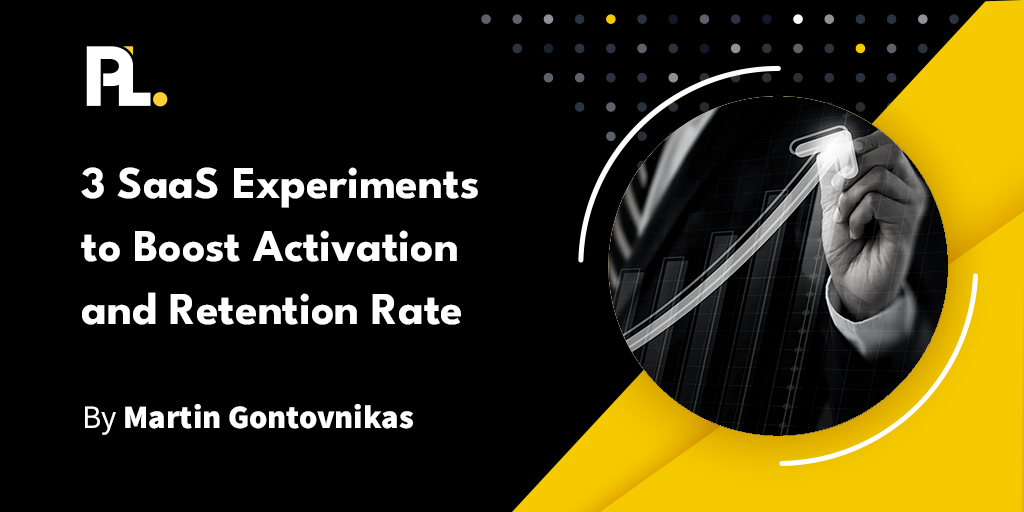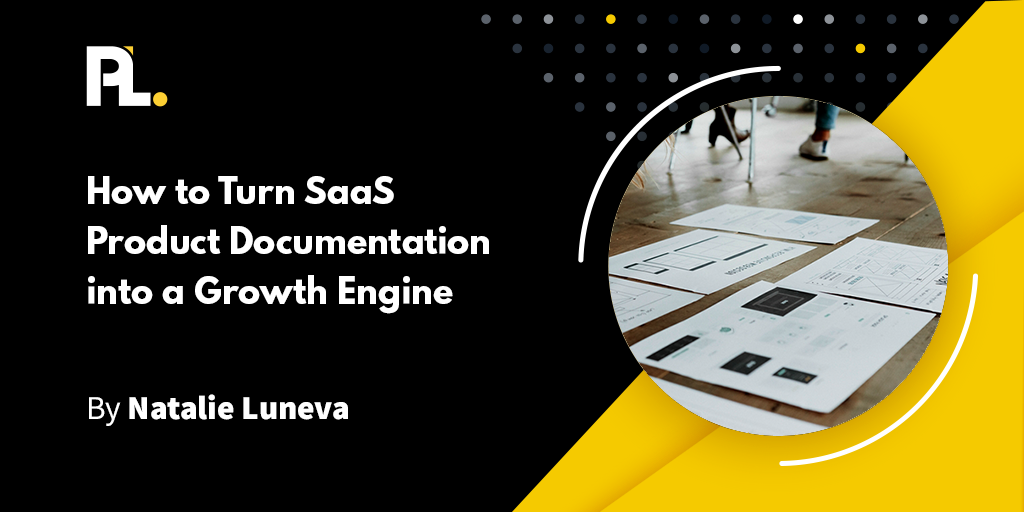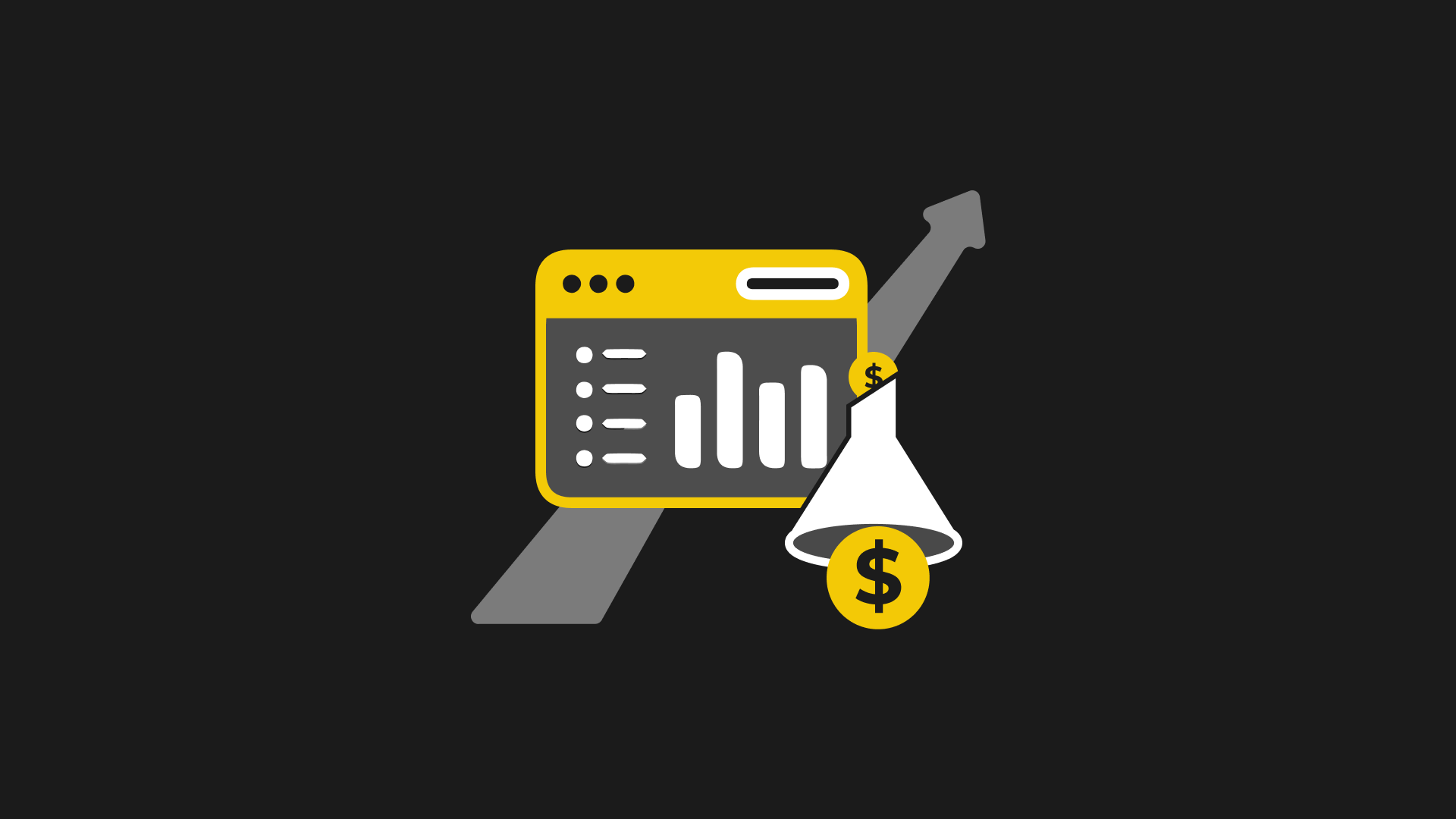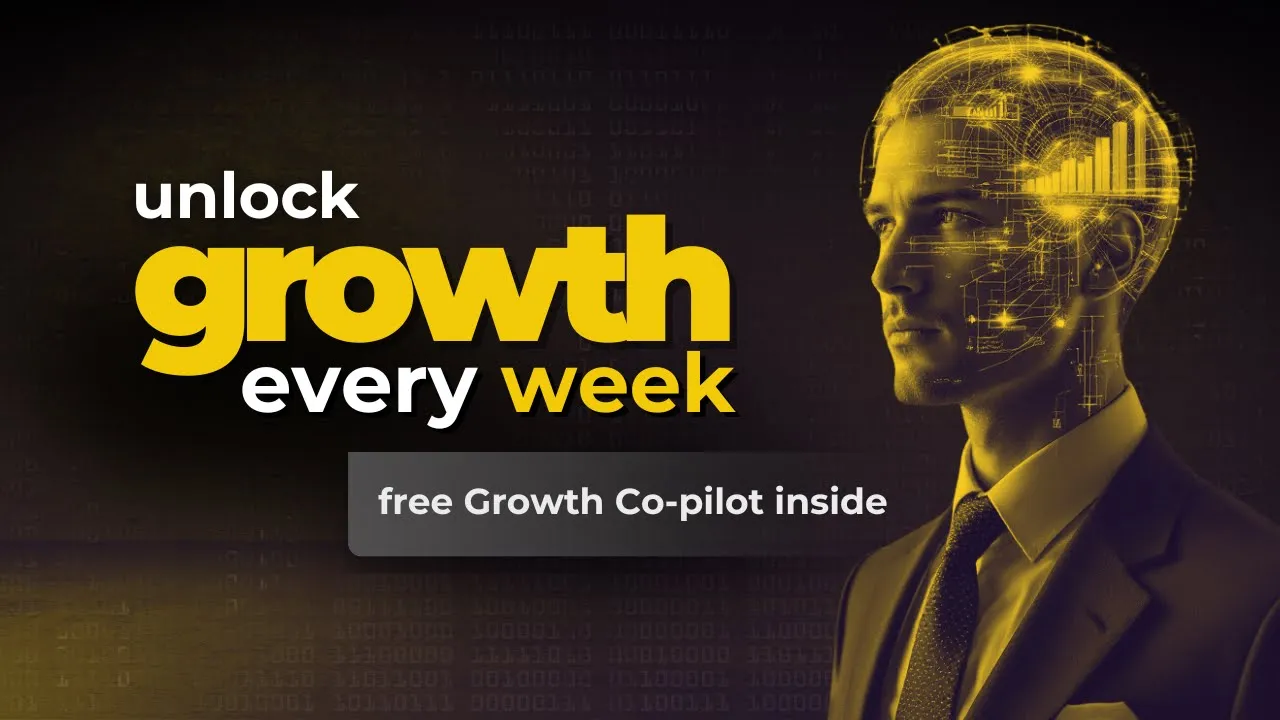
This article is based on one core component that's revealed in The Product-Led Playbook. Packed with case studies and templates, it's the go-to manual you need to build a successful product-led business.
It’s not the big that eats the small.
It’s the fast that eats the slow.
Most startups can compete against large enterprises because of speed.
It’s the one big advantage of being small.
Yet, speed can be a double-edged sword if you don’t know how to apply it.
The common adage of “move fast and break things” seems helpful until you look back in the rearview mirror and realize that you’ve been working on stuff that hasn’t made a dent in your goals in the past six months.
Ouch.
The saying should be more like, “Move fast while doing the right things.”
Less catchy, but more useful.
How on earth do you make that happen?
It requires everyone in the product-led business to increase the velocity of working on the right stuff while giving the wrong stuff one hell of a hard time seeing the light of day.
The problem, of course, is that you probably don’t have a good filter to differentiate between the right and wrong stuff to work on.
That’s, in a nutshell, the whole point of this article.
By the end, you’ll be able to move faster as a business by greenlighting the right stuff to work on while making sure that the wrong stuff (that won’t make any impact on the business) gets killed in action.
But to digest what I’m about to share with you, I need you to challenge your thinking with one belief…
The most successful companies don't do more — they do less.
The single difference is that they're more intentional about what they choose to focus on.
But how do you operationalize this?
It all comes down to nailing the most important process in your business — your workflow.
A SaaS workflow is a series of sequential interconnected steps or tasks to achieve a particular goal or outcome.
In this case, the main workflow management we’ll unpack is how your team decides to work on new projects.
Unlike a marketing funnel where each customer journey stage will be relentlessly optimized, we will create an inverted SaaS workflow that rewards your team for killing problems and solutions that shouldn’t see the light of day.
We call this the inverted SaaS workflow, and it’s a game changer for significantly increasing the output on your team.

Curious about how to manage the workflow works before diving in?
Let's say you run into a problem where you're not generating enough customers consistently each month...
Instead of jumping to create a new solution the minute you identify a juicy problem, take a step back and identify all of the other problems holding back the business to see if this issue is a symptom of a bigger issue.
Then prioritize all of the problems to identify what the root problem is.
Once you have identified the root problem, generate as many solutions as you can that could address that problem. After you've generated a good amount of solutions, prioritize them based on what's easiest to solve – and most impactful.
Finally, create the solution and integrate it into the business if it solves the problem.
By going through this process, each solution has to fight for its life to see the light of day.
This saves you and your team enormous time and ensures you invest your time on solutions with an outsized impact.
Each stage of your inverted SaaS workflow is a stopgap for ensuring that you only focus on solving problems that will outsize your business.
By adding this positive friction to shipping solutions, you’re also going to increase the quality of solutions shipped.
But that’s not all you’ll increase.
More importantly, you will increase the velocity of how quickly you can produce the right solutions because your team won’t be as bogged down launching projects with little to no impact.
Remember that less is more. If you are intentional with what problems and solutions you solve.
So the question, hopefully in your head now, is how do I make that approach happen in my business?
Glad you asked.
By the end of this article, you’re going to walk away with a process you can use to identify problems on an ongoing basis and create solutions that have a high rate of success.
Yet, as you build out your ProductLed Workflow, there are several big mistakes I want to warn you about so you can avoid them.
Don’t make these mistakes when building your SaaS workflow
These are the top three mistakes to avoid when building new solutions. Without the right workflow, these mistakes are so easy to make.
#1 Playing “whack a mole” with symptoms
One of the most expensive, but least fun games to play in business is “whack a mole” with symptoms. You’ve probably played it without knowing it. Here’s how it works: you identify a potential problem (i.e., not enough users in a given week), and then you generate a quick solution to solve the problem. But then you find that your new solution didn’t do anything.
Here’s a real-world example: you have a low conversion rate on your homepage, so you update the copy and images only to see a marginal increase in signups. The root problem was that your users didn’t think your offer was compelling, so they didn’t sign up. You wasted your time and energy making the copy and images better when you could have spent a bit more time validating if you had a compelling offer in the first place.
Occasionally “whack a mole” is fun because you can hit some issues straight on its head on the first try, but we all know that’s not as common as we’d like.
#2 Falling in love with one solution
If you’ve only got one potential solution to one problem, it’s easy to get fixated on launching that solution. It’s the one! You think you’ve found gold when it’s fool’s gold and probably not the best solution for you to launch. But how would you know otherwise? It’s easy to fall in love with one solution when you don’t generate many solutions for each potential problem. By generating many potential solutions, you can kill your darlings and sift through the fool's gold to find real gold.
#3 Going all in with your solution
Imagine you’ve just met your dream partner on the first date. You think they’re amazing, so you propose immediately and try to lock them down. Feels a tad bit premature, right?
Totally. The same goes for big potential solutions that could take a lot of time and resources to build out. Not designing a test to prove your hypothesis is silly. Yet, many teams commit everyone to a new solution and build it out without much (if any) evidence that the proposed solution will solve the root issue.
Yet, how do you easily avoid these mistakes and build the right solutions?
Let’s dig into the ProductLed Workflow.
How does the ProductLed Workflow work?
Start with the three P’s of Efficiency:
- Pinpoint what the root issue is — make sure that’s where the majority of your team’s time and energy is spent addressing.
- Prioritize the right solutions — so that you can focus on ones that align with your strength as a business and are the easiest to roll out.
- Produce the best solution(s) possible.
Each P represents a phase in the workflow and has two complementary steps to help you break the SaaS workflow down.
Here’s a high-level overview of the ProductLed Workflow:

To get the most out of this article, download a copy of the ProductLed Workflow Template so you can follow along and complete the activities.
As you go through each phase, you’ll notice that you’ll gain a lot more clarity on what the root problem is that you need to solve; you’ll find the best solution(s) to solve it, and invest your time in producing the right solutions with task management that will have an outsized impact.
This workflow creates efficiency as a byproduct so that you can invest your time in places with an outsized impact.
Let’s dig into Phase 1!
Phase 1: Pinpoint
The entire goal of the first phase is to pinpoint your root problem.
Root problems are deceptive buggers. You need to put on your detective hat and hunt for what’s the real problem. Like many murder mystery shows on TV, a lot of times, the murderer leaves intentional clues to throw you off track. The same applies to searching for your root issue. You may think the root issue behind your low-free-to-paid conversion rate is that you have a confusing checkout experience, but what’s really causing the low free-to-paid conversion rate?
Well, that’s where you need to dig deeper and peel off layer by layer until you get to the core of what’s driving that issue.
Identifying your root problem is super important because the rest of the steps in your roadmap depend on it. If you misdiagnose the root issue, you will waste time generating, prioritizing, creating, and integrating solutions into the business only to have little to no impact.
You can waste two-thirds of your team's time in the solution space for every misdiagnosed root issue.

Although it’s tempting to skip Phase 1 and get right into the action by putting on our solution hats, it’s the equivalent of someone shooting from their hip.
Going through Phase 1 will allow you to pinpoint the main issue so you can take one shot and hit the target on the bullseye.
To help you identify root issues at your company, we’ve outlined two steps you should follow.
Step One: Identify All Problems
Every business has problems. It rarely is all roses and sunshine. And that’s okay. Every business has things it’s good at and things it isn’t good at. It’s up to us to identify the areas that need the most attention.
Yet, where do you start when it comes to identifying problems?
Do you start by reviewing your customer journey to see where users fall off?
Do you review your company financials to see if you’re on track for your goals?
Do you start interviewing customers?
There’s no doubt lots of places you could start, so where should you start?
We recommend starting with reviewing your Data.
If you’ve built out your Company, Customer, and Product Scorecards, you’ll typically be able to identify where bottlenecks are in your business and what is and isn’t working.
However, these are mostly quantitative data points that only tell half the story.
To get the other half of the story, you need to review your User Component and all the obstacles your user is going through to experience user success.
Combined, looking at both your quantitative and qualitative data sources will allow you to get a good grasp on what the main problems are.
Your action items are:
- List out all of the problems when reviewing your company, customer, and product data
- List out all of the main obstacles your users face
- List out the main problems you believe should be solved
Once you’re done identifying your top three problems, put them in your workflow template

Now, how do you go from listing all your problems to deciding which one(s) to address first?
That’s up next.
Step Two: Pinpoint Your Root Problem
One of the easiest ways to pinpoint your root problem is to validate if you’re solving a meaningful problem for your user.
In the User Component, you identified many potential obstacles your users will face in their pursuit of success.
Now it’s time first to see which problems to solve, as not all problems are created equal.
Take each problem you’ve identified through our High-Impact Checklist to help identify if it’s a root issue or not:
- This problem impacts our ideal user.
- This problem makes it harder for our users to experience success.
- Solving this problem is very important to our users.
- Our users currently have low satisfaction with the current solution.
- There’s a high opportunity to add value.
- This opportunity aligns with our strategic goals.
If you can confidently check the boxes on these criteria, you can get closer to identifying the root problem. However, sometimes you won’t, and you’ll need to go back to the first step and do more research on what’s driving your root issue, or you’ll need to set up a quick experiment to validate the root problem.
⚡ Case Study: At ProductLed, we pivoted to online cohorts in 2020 during the pandemic, and the business almost doubled overnight. Yet, in early 2021 there were signs of slowed growth. Not as many people were signing up for the online cohorts. We weren’t sure what the root issue was. One hypothesis was that it was because of our price point. At $2,000 per seat, it was high for a 4-week program, so we presold an on-demand version of the program with limited success. Although potential prospects said it was price holding them back from buying, that wasn’t what drove the reduced sales.
After more digging, we finally identified that it was because our Ideal User Profile (IUP) had changed. As PLG as a category matured, we moved from selling to early adopters to the early majority, so our messaging, value proposition, and offer must focus on that new IUP. I share this example because it’s easy to believe potential prospects’ objections about why they’re not buying, but that’s rarely the case. If you peel the onion a few layers deeper, you’ll unlock the true insight that can reveal the root problem.
With that said, I want you to know that when teams can’t identify their root problem, most go ahead with solving a problem they think will make an impact. If the solution is not hard to build, this isn’t the end of the world. Yet it will hold you back as you scale up your business and reward the dopamine rush of shipping new solutions without the discipline of calibrating what problems are worth solving.
⚡ Case Study: ConvertKit.com After reviewing all of ConvertKit’s problems, they decided that not having a page to ask people to sign up for the newsletter would be the biggest blocker preventing users from hitting their goals and seeing success. Solving this one problem could help users be way more successful in the early stages and get their first 1,000 subscribers.
Now it’s your turn, here’s how to take action:
- Take each problem through the High-Impact Checklist.
- Pinpoint the root problem.
- Fill out your root problem in the workflow template.

Going through this activity, you’ll apply much-needed rigor to deciding where to focus.
Now comes the fun part – we put on our solution cap and go wild.
Phase 2: Prioritize
Once you’ve decided what problems you’re going to solve, it becomes a matter of identifying the best solution. For most people in product, this is the more exciting part as it is where creativity runs freely, and you don’t need to commit to anything immediately. To identify the best solutions, I’ll walk you through two steps you should follow.
Step One: Generate Solutions
Not all solutions are created equal.
For example, at John F. Kennedy Airport, travelers complained that they were waiting too long for their baggage. The airport staff formulated a few solutions:
- Hiring more staff to take the bags off the plane faster.
- Investing more in technology to speed up the baggage offboarding.
- Making it longer to walk to the baggage claim area.
Since the third option was the most affordable and easiest to roll out, they opted to make their passengers walk longer, and you know what… it worked. Making travelers walk longer to the baggage claim area made it feel like they were waiting less time for their bags. As a result, satisfaction went up.
Why?
Because it feels long when you’re just staring at the baggage claim trolly waiting for your bag. Yet, when you’re walking to something, time passes faster.
I share this example because when a company has access to a lot of resources and talent, it’s easy to invest in building out expensive solutions. Yet a scrappy startup can, and always will, find an alternative solution that might work just as well for a fraction of the investment. Simply because they had no other choice.
Now that you know your root problem, it’s your turn to put on your solution hat and identify the best possible solution.
A good solution can teardown any obstacle in your user’s way.
But remember – not all solutions are created equal. Some pack a punch, while others barely help.
The goal is to identify a solution that will be 10x better than the current solution.
To do this, you need to create a volume of potential solutions. You want to generate at least 10 to 15 potential solutions for every root problem you've outlined.
It seems wild, but when you’re generating that many potential solutions, you’ll hit a wall. That’s when creative ideas come into play.
Pro Tip: your solutions don’t have to be product-related.
When solving a root problem, complete a PRC Test to generate more solutions.
PRC stands for:
- Product Solution (includes anything within the product)
- Resource Solution (includes quizzes, tools, events, etc.)
- Content Solution (includes articles, webinars, books, etc.)
⚡ Case Study: ConvertKit.com users struggled to get their users past 1,000 subscribers in the early days. The root problem they identified was that they didn’t have a page to easily share with interested people to get them to sign up. Let’s apply the PCR test to this root problem. What are some product solutions that could solve this problem? They could build a free landing page tool with pre-built templates that could make it easy enough to create a page to collect subscribers in less than 5 minutes. What about content solutions? They could write more blog posts on how to get more subscribers. They could host more webinars on how to get your first 1,000 subscribers. What about resource solutions? They could create a BootCamp event to help creators get their first 1,000 subscribers. All of these things could be done and more. The goal of generating solutions is to generate at least five to ten potential solutions for your root problem. The more, the better!
At this point, the goal isn’t to select the best solutions. It’s to let your creativity go wild and generate many great potential solutions.
Here’s your action item:
- List out at least five to 10 potential solutions for your root problem.

Remember: the goal here is to identify 10x solutions that can better solve the problem than the current solutions.
10x solutions are wildly better than the alternatives.
For instance, when ChatGPT came onto the scene, it was 10x better than most search engines at getting you answers for most problems you gave it. Hence why the adoption of the product was so high.
I want you to brainstorm the craziest ideas that could have the biggest impact.
In the next step, we’ll slim these down. But for now, let your imagination go wild.
Step Two: Prioritize Solutions
In an ideal world, we could test all of your potential solutions to see which would work best. But in the real world, we have limited time and resources to build solutions, so we need to invest our time wisely.
To use our resources best, we must apply some rigor to selecting the solutions we will test and build.
For every solution you’ve built out, go through the Prioritization Checklist:
- Is the solution 10x better than their current solution?
- Does the solution quickly solve the user’s obstacle?
- Does the solution require little to no effort for the user to access the value?
- Does the solution align with our strategic priorities?
- Is the solution inexpensive to roll out?
- Have we validated all risky assumptions that were a part of rolling out this solution?
- Are we confident solving this obstacle will lead to a huge impact on our users?
If you can check the box on each item in this checklist, chances are you're sitting on a winning solution that you should greenlight.
⚡ Case Study: ConvertKit.com generated a list of potential solutions to solve their root issue of helping creators get a page up to collect email subscribers easily. Although solutions like generating more content on how to get more subscribers and building out a landing page would no doubt help these creators, it’d still be very difficult for these users to achieve, given that many of them weren’t that technical. ConvertKit had to make a choice. Should they create more solutions that were easy for them to produce (i.e., blog posts and webinars)? Or bite the bullet and create a product solution that would be a big investment for the team but would make it 10x easier for users to collect email subscribers? They made the tough call and decided to build a free landing page tool to help their creators easily collect email subscribers.
When going through the High-Impact Checklist, I want you to use it as a rule of thumb. In the ConvertKit case study, it checked all the boxes except that it was expensive to build out. It was a big bet for the company. Yet, the evidence they had to prove that this was the right decision was overwhelming, so they decided to bite the bullet and pursue this solution regardless.
So what do you do when it’s not so black and white?
That’s when it helps to introduce a lightweight decision framework.
One of my favorite frameworks for deciding what to prioritize came from Gibson Biddle, former CPO at Netflix, who invented the DHM Model.
It stands for Delight, Hard to Copy, and Margin Enhancing.
How it works is you list out all of your potential solutions in the left-hand column. Then you’d check the box on which one Delights, is Hard to Copy, and is Margin Enhancing.
Strategy Matrix
Based on plugging the three solutions into our Strategy Matrix, you can easily see that only one solution checks the box on the DHM Model.
In this case, investing considerable resources, time, and energy into building a new free landing page tool.
Yet, the DHM model is just one way to apply more rigor to decide which solutions to build out.
Alex Hormozir recommends prioritizing solutions by what drives the most impact for your customers and is the lowest cost to fulfill. I love how simple this approach is. It’s great for early-stage companies to adopt.
One of the most powerful ways to prioritize your potential solutions is by basing them on your “how-to-win” strategy (this was the first component in the ProductLed System™️).
You can do this by filtering your potential solutions that support your moat.
Here’s an example:
Let’s say the three moats that support your how-to-win strategy are:
- User and customer experience
- Education
- Free
You could then score your potential solutions based on the criteria:
Strategy Matrix
This way, your strategy isn’t something you set and forget.
It’s baked into how you prioritize every initiative throughout your business.
Once you go through your personalized Strategy Matrix, you can narrow your potential solutions to just one or two high-impact solutions.
Here are your action items:
- Take every solution you have through the Prioritization Checklist and narrow your potential solutions to three to five high-impact solutions.
- Create your strategy matrix that is based on your how-to-win strategy.
- Identify one or two solutions that help you lean into your strategy.
- List out your top solution in the workflow template.

Once you’ve prioritized your solutions, it’s time to build them out.
Phase 3: Produce
This is where the rubber meets the road. Since you’ve researched the root problem in your business and the top solution(s), your odds of launching a successful solution are way higher. But you can still mess it up if you don’t follow the steps below.
Create Solutions
I won’t go into much depth on how to create your solutions, as that largely depends on what kind of solution you’re creating. What I will focus on is how to consider rolling out your solution.
If your solution takes a long time to build, define a minimum viable test to prove that it’s worth investing more time to roll it out. It’s always a shame when teams forge ahead on one big solution without testing some risky assumptions around the idea.
⚡ Case Study: Before ConvertKit.com invested heavily into building their free landing page tool, they wanted to understand if this was going to make a big difference in creators seeing success in gaining more subscribers. Instead of investing months of their team's time in pursuit of a potential solution that may or may not work, they decided to run a small experiment at this stage and manually create landing pages for creators that signed up. This saved the creator a ton of time and would provide the data required to see if a landing page made that big of a difference. Within a month, they’d be able to review the data from the users they helped with building their landing pages and see if this made an undeniable impact on helping these users succeed. Luckily, this experiment was successful, so developing the free landing page tool got the green light.
I love this example above because it showcases the importance of testing your big and small bets. If it’s a small bet that takes less than one or two weeks to build out, by all means, go ahead with it. However, for bigger bets that could take many months to build out, it’s important to scope it down to an experiment to validate whether this is truly the right solution. Had ConvertKit seen that giving their creators a free landing page made zero difference in gaining more subscribers, that would have been a great sign to stop pursuing the idea and go back to what is the root problem.
Now it’s your turn.
Your action item is:
- Build out your one top solution that will impact your user the most.
- If it’s a solution that will take more than one week, see if there’s a way to validate whether this solution will solve the problem.

Once you’ve built it, let’s integrate it into the business.
Integrate Your Solution
When you decide to eat something, your body integrates whatever you eat into energy.
If you eat crap, your body tries to integrate it into energy. If it doesn’t like it, you might get indigestion, an upset tummy, or something else.
If you feed it high-quality food, your body will digest it easily and turn it into energy.
I like the food analogy as it relates to understanding how to integrate solutions into your business. Because if you start with a bad solution (i.e., ingredients), it will be a bumpy ride no matter what.
Yet, if you start with the high-quality solutions you’ve rolled out, it’ll be way easier for the company to integrate.
To truly integrate a solution into your business, it involves three steps:
- Step 1: Launch the solution
- Step 2: Measure success
- Step 3: Optimize the solution
Let’s start with what launching your solution might look like.
Step One: Launch your solution
Launching your solution will look different for every department, depending on whether you’re launching a piece of content, a new feature, or a marketing resource, so I won’t go into the specifics for each.
I will go into how to think about rolling out any new solution. You want to start by identifying who you will distribute it to first.
Let’s launch a long-form piece of content. Here’s how we’d approach launching it:
- Share it with our customers.
- Share it with our marketing list.
- Share it on all our social channels.
For a new feature, it could look like:
- Share it with our ideal customers first to get feedback.
- If we see good positive results, share it with more of our users.
- Start promoting it on the website to drive new signups for this new feature.
- Introduce this feature as part of the onboarding sequence.
The key is to launch in waves of potential users to maximize the feedback you receive. For instance, when you launch to only your power users, you can get incredible feedback, adapt the solution based on it, and then roll it out to all your customers. Then you can get more feedback and roll it out to all your users. And then continue with the same cycle of feedback. At each stage, you increase your learnings and can refine your solution so that it’s truly world-class.
Here’s your action item:
- Create a launch checklist for how you’re going to launch your solution.
- Launch your new solution.
Once you’ve launched your solution, it’s time to measure whether it was successful.
Step Two: Measure success
When it comes to measuring success, here are the three most likely scenarios post-launch:
Scenario 1: Your solution is wildly successful
I wish I could say that even if you go through the ProductLed Workflow, you’ll wind up with a home run every time. Unfortunately, that’s not the case. This SaaS workflow helps you increase your batting average to hit more home runs over time. But launching solutions is a numbers game. The more you launch and understand your users, the better you get at predicting what will make a huge impact. So when you do hit a home run, what do you do? If you can double down on it in any way, do that. It’s worth investing more time to improve your solution even more. If your solution is unique and differentiated, you might decide to lean more into that in your marketing copy. You might update your onboarding flow to help more people experience this new solution. You might decide to write more blog posts around this new solution. You get the point. Let’s make sure the world knows when you hit a home run. Or at least your ideal users, for starters. ;)
Scenario 2: Your solution flops
After all your hard work, you launch the new solution, which doesn’t impact you. It’s not the end of the world. It’s only a failure if you don’t learn from it. To learn from it, do a retrospective and ask yourself these three questions:
- What went well?
- What didn’t go well?
- What should we do differently next time?
Pro Tip: do this with every team member involved in this solution so they can all weigh in on why it wasn’t successful and what to do differently next time.
Scenario 3: You can’t tell if your solution made an impact
Rest assured, this one isn’t too uncommon. It typically happens when a team doesn’t scope out what success looks like before launching the new solution. There was no success metric to monitor. If that’s the case, you can review what success should look like for launching this solution and then re-evaluate based on the data if you have it. Most likely, your solution had little to no impact. Or maybe even a negative impact. If that’s the case, you can decide to kill it if it made a negative impact. If it is slightly improved, you might invest more time to optimize it. Or, if it has not made any impact but adds more complexity to the product, you can kill it.
Here are your action items:
- Set key metrics to monitor the solution's success before launching it.
- Measure the success of that solution after giving it a realistic timeline to see if it made an impact or not.
- Once you have measured the solution's success, decide to keep, kill, or optimize it.
Now for those of you who created a solution that made a positive impact, bravo!
It’s time to optimize that solution.
Step Three: Optimize the solution
Most companies miss this last step. They go on to solve the next problem and miss a huge opportunity. A lot of times, our first solution does a good job of solving the obstacle. But if we spent another cycle or two optimizing it, we could take that solution from good to great.
For instance, I created a free trial vs. freemium article, which did well. We optimized the article, which helped. But it wasn’t until we created a complimentary free trial vs. freemium quiz and embedded it inside the article that it took off. We optimized something already working and created a differentiated solution that nobody else had in competing articles.
⚡ Case Study: ConvertKit.com initially launched the free landing page tool to their existing customers to see if it had an impact and gain early feedback. Then they launched it to all of their users over time. After seeing a lot of compelling evidence that the free landing page tool was helping early-stage creators gain more subscribers, they decided to double down and integrate it into all of their plans and make it 100% free. They also invested in promoting the free landing page tool through Google ads. If you searched for a landing page tool, you’d find ConvertKit. They also ensured that all articles about getting more subscribers were promoted on the free landing page. They didn’t assume people would automatically find out about it. They ensured you knew they had a tool to help you get more subscribers. After helping 1,000’s of creators set up landing pages, they optimized the pre-built templates to help creators get even more subscribers easily.
Now it’s your turn:
- Identify several solutions that are working well for your business.
- Ask yourself what is one or two things we could do to take this to the next level.
Now let’s recap everything.
Putting it all together
The most successful companies don’t do more.
They do less—by focusing their limited time, resources, and attention on creating solutions that will have an outsized impact.
They’re able to make this a reality by following the three P’s of Efficiency:
- Pinpoint the root problem
- Prioritize the highest-impact solutions
- Produce the best solutions
By following this SaaS workflow, you’ll significantly increase the odds of launching solutions that truly move the needle.
Now that you’ve wrapped up the Process Component, continue building your product-led business by exploring the other eight components of the ProductLed GTM System™.
Need help assessing where you stand? Take the PLG readiness assessment to pinpoint your starting point.
Or, if you want more hands-on support, you can schedule a strategy session or work with a certified ProductLed Implementer to help guide the way.
Up next: a deep dive into setting up the Team Component.



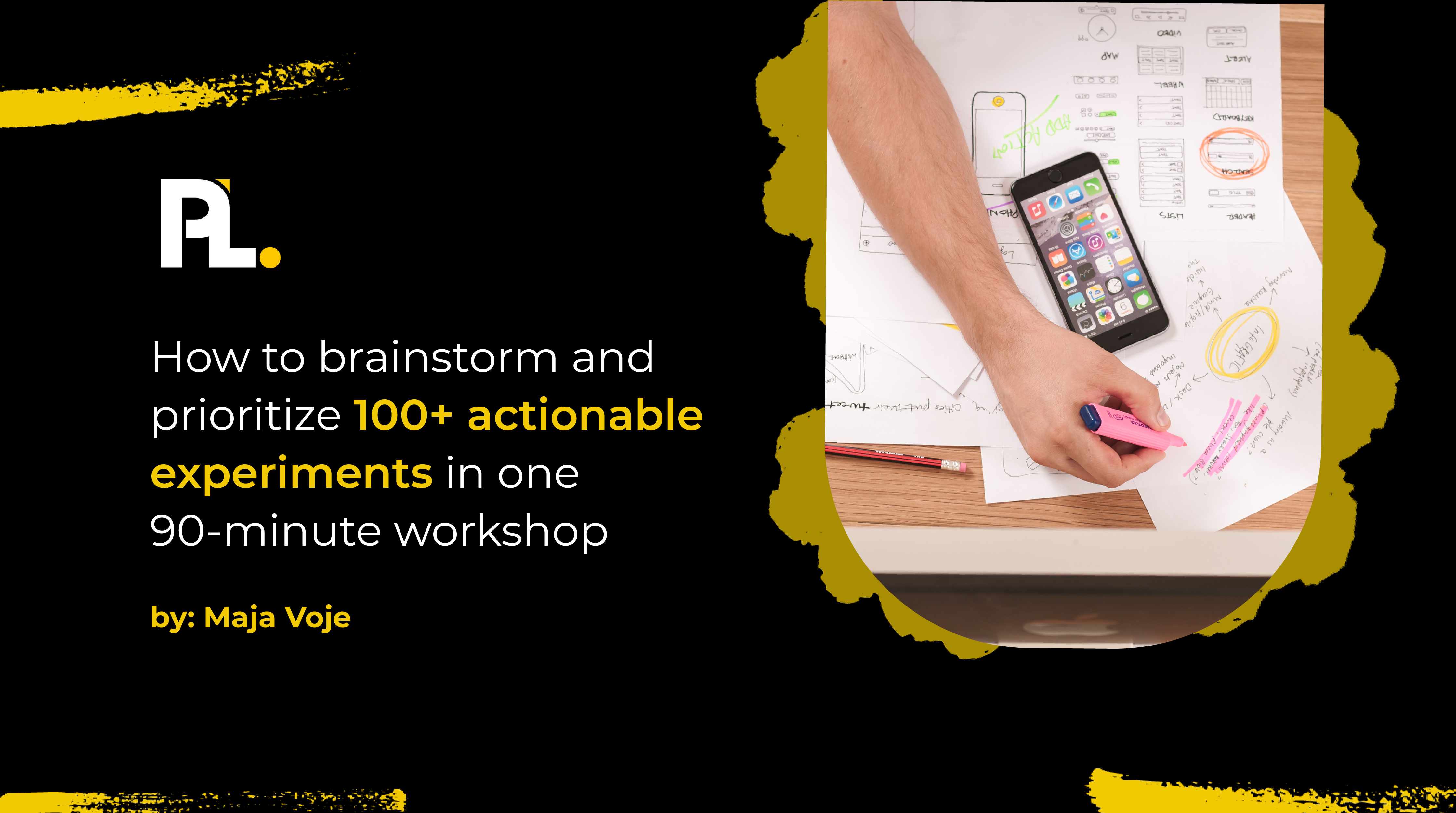
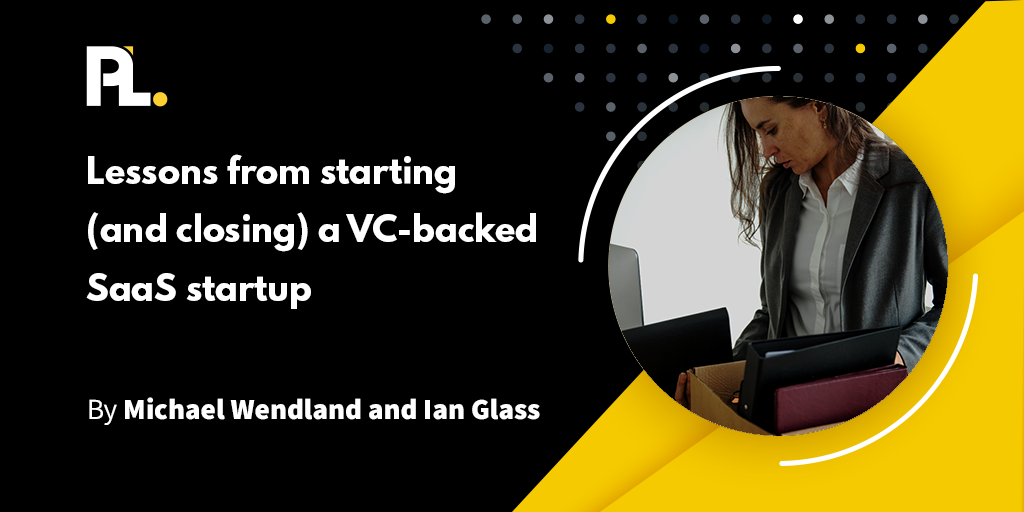
%20(1).png)


